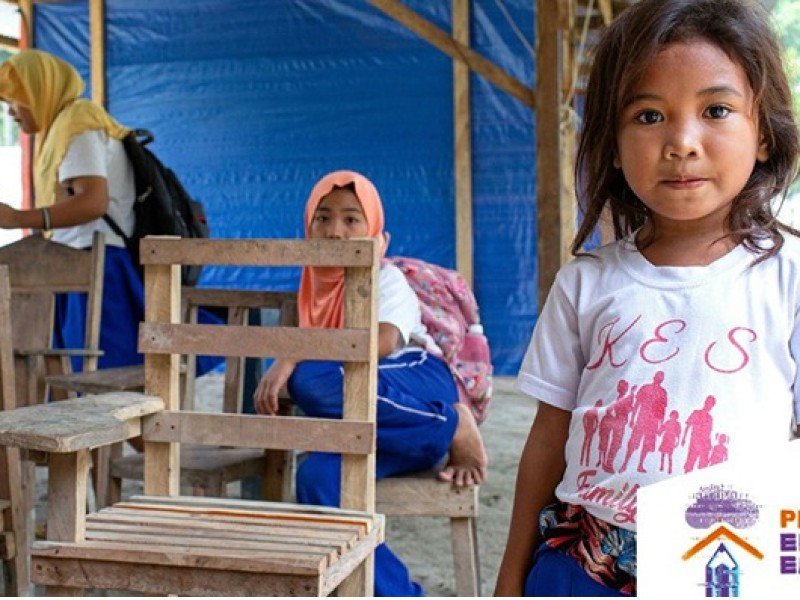Education In Emergencies: The Foundation For Gender Transformative Climate Action

Why education in emergencies must be at the top of the CSW66 Agenda
This week, Government delegations, civil society, and other stakeholders are gathered at the sixty-sixth session of the Commission on the Status of Women with the joint realization that “gender inequality coupled with climate and environment crises is the greatest sustainable development challenge of the present time.”[1]
The theme of CSW66 of “Achieving gender equality and the empowerment of all women and girls in the context of climate change, environmental and disaster risk reduction policies and programmes” is of crucial importance. But, how can we empower women and girls and enable them to participate in resilience-building solutions and climate policy leadership if we cannot guarantee their basic human right to education in the very places and communities most affected by the climate crisis?
Protecting women and girls’ right to education should be at the top of the CSW66 Agenda, as there cannot be gender transformative climate action without education.
Reaching women and girls directly affected by environmental emergencies and disasters
This challenge of empowering women for resilience building and climate action is most urgent and acute in communities directly affected by the environmental emergencies and disasters resulting from the climate crisis. The bad news is that the climate crisis is deepening by the minute: extreme weather events account for 91 percent of all major disasters and are predicted to worsen over the coming years.
Disasters, from hurricanes and tsunamis to slow-onset disasters like droughts, dramatically affect the right to education of millions of people, particularly children and youth. The destruction of education facilities and teaching materials, the loss of livelihoods, and the forced displacement within and across borders shut millions of children and youth out of the classroom. This is not a future threat, but a present reality: In 2020, climate disasters accounted for over 30 million newly displaced people. By 2050, 216 million people could move within their countries as a result of climate change, and 140 million people across South Asia, sub-Saharan Africa, and Latin America will be newly displaced due to climate change[2]. Despite refugees’ right to education being protected under international law, 48% of all school-age refugee children have no access to education[3].
Protecting women and girl’s right to education in emergencies
As often, the impact on women and girls is much greater. The limited access of women to public services, social protection, and infrastructure increase their vulnerability to climate change, environmental degradation, and disasters. And, of course, this has a dramatic impact on their right to education: If current trends continue, 12.5 million girls will be prevented from completing their education each year due to climate change as a contributing factor by 2025.
Climate and environmental crises and disasters also exacerbate threats to peace and security, affecting in particular fragile or conflict-affected countries and women and girls. 54% of the world’s out-of-school girls live in crisis-affected countries. That is 69 million girls are deprived of their basic human right to education and more likely to be subjected to violence, harassment, and child marriage as a result.[4]
There will be no gender transformative climate action without education
Gender transformative climate action starts with ensuring that girls and women have equal opportunities to fulfill their right to education in contexts most affected by climate and environmental crises and disasters. Protecting women and girls’ right to education in emergencies is the foundation for making a real difference, empowering women and allowing them to be part of the solution to the climate crisis.
Policymakers and leaders gathered in CSW66 must Protect Education in Emergencies Now! and put education at the centre of their gender equality and empowerment agenda in the context of climate change. First, providing girls with quality education in the context of climate and environmental crises and disasters simply saves lives, as it provides immediate physical and psycho-social protection. But education also equips women and girls with life-saving knowledge and skills that can enable them not only to survive but to thrive in a sustainable world. Only through transformative climate education can we promote critical thinking on the structural causes of crises and the ways to overcome them, putting rights, dignity, and sustainability at the center. Guaranteeing access to quality education for girls and the availability of lifelong learning opportunities for women in climate and environmental crises and disasters is the foundation of all climate actions and solutions.
Climate justice and gender justice are one – transformative education for meaningful participation
There will be no sustainable solution without participation, and no genuine and meaningful participation without transformative education, including in emergency contexts. Women and girls’ engagement and leadership are critical for making climate, environmental, and disaster risk action more effective. The capacity of women and girls to take action and build a resilient future depends on removing structural barriers and gender gaps, especially in education, and particularly in emergencies.
Protect Education in Emergencies Now! calls on governments and other actors involved in emergency response to take urgent, concrete, and effective measures to protect the right to education in emergencies for all, including women and girls. Our call to action is summarised in this short film. Follow #ProtectEiENow, join the campaign, and together let’s ensure that women and girls living in the contexts most affected by the climate crisis are empowered to be part of the solution.
____________________________________________
[1] Achieving gender equality and the empowerment of all women and girls in the context of climate change, environmental and disaster risk reduction policies and programmes, Report of the Secretary-General E/CN.6/2022/3
[2] Inter-agency Network for Education in Emergencies (INEE). (2020). 20 Years of INEE: Achievements and Challenges in Education in Emergencies. New York, NY. https://inee.org/resources/20-years-of-inee
[3] DMC, Global Report on Internal Displacement 2021, https://www.internal-displacement.org/global-report/grid2021/
[4] Inter-agency Network for Education in Emergencies (INEE) (2021), Mind the gap: The state of girls’ education in crisis and conflict, https://inee.org/resources/mind-gap-state-girls-education-crisis-and-conflict


